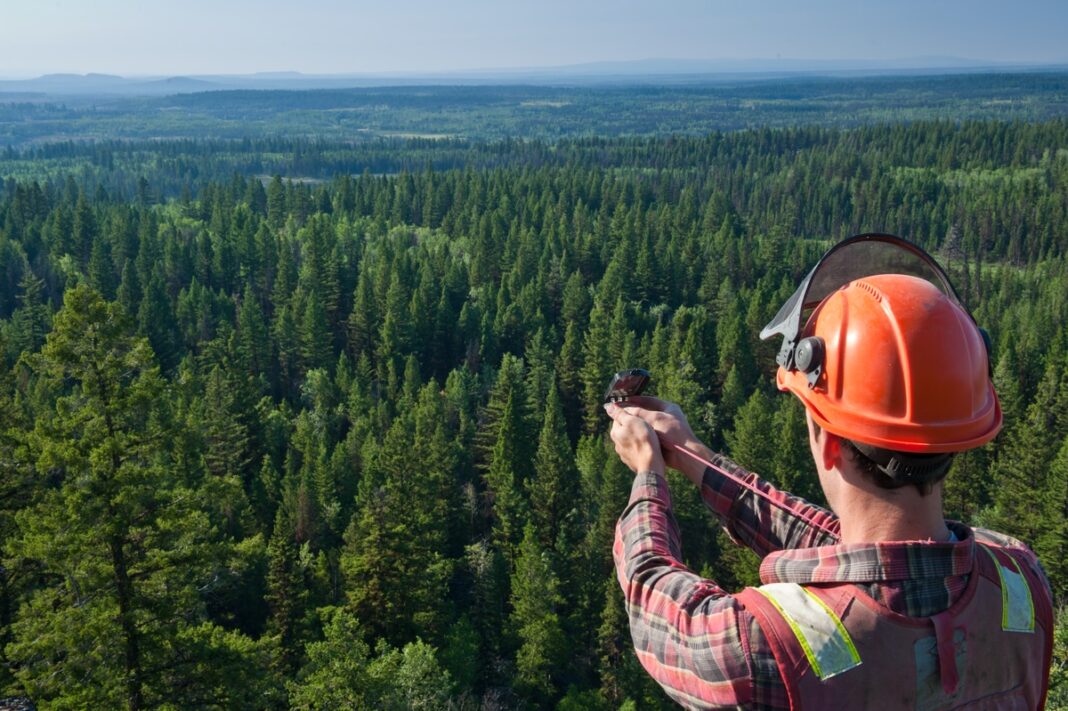A new aerial forest fertilisation project in the Squamish-Lillooet region in southwest British Columbia aims to sequester carbon dioxide in forests and improve timber volumes for harvesting.
During October and November, helicopters dropped urea—a nitrogen fertiliser similar to that spread on residential lawns—across forests in the Lillooet, Pemberton, and Squamish regions.
The project is funded through the province’s Forest Investment Program and administered by B.A. Blackwell & Associates, a forestry consulting and environmental management company.
Since every tree to be harvested over the next 50 years is in the ground and growing now, fertilisation is considered the key investment option to improve conifer growth during that timeframe.
Jeff McWilliams, a senior associate with B.A. Blackwell said programs like this had occurred since the early 2000s in regions along British Columbia Highway 99 (also known as the Sea to Sky Highway), a scenic drive between Vancouver and Whistler in western Canada. The program will start in the north and work its way south. McWilliams explained the program works by trucking fertiliser to designated areas for spreading, where it is loaded onto a helicopter that spreads it similarly to a lawn fertiliser.
“The helicopter has precise navigational direction,” McWilliams said. “They’ve got the maps where the fertilisers will be applied, and they have to stay within those boundaries so that we make sure the fertiliser ends up where we planned it to go.”
For anyone hiking in the fertilised areas, McWilliams emphasised there is no risk of injury. The program’s first objective is sequestering carbon dioxide to mitigate climate change. Fertiliser improves nutrients for tree growth and subsequent atmospheric carbon storage.
The second objective is “to improve timber volumes and value for future harvesting.”
British Columbia chief forester Shane Berg recommends fertilised stands grow for at least 7-10 years before harvest, but some harvesting can happen in 5-7 years “with appropriate rationale”.
Berg said forest licensees are informed before fertilisation begins so it doesn’t conflict with harvest plans: “Increased forest volumes can be up to 30 cub m per hectare in a 10-year period.”
Economic benefits of fertilisation include employment and GDP, with “4.5 full-time equivalents and $2.7 million per 10,000 hectares of treatment, respectively.”
The fertiliser program will help second-growth stands become merchantable sooner. Research results indicate the appropriate criteria of species, site quality, timing, and stand conditions under which fertiliser can be applied to obtain the best results. Fertilising 20,000 hectares over three years is estimated to produce an additional 600,000 cubic metres of wood over the next 10 years. That extra wood will contribute to the timber harvest, thereby supporting sustainable jobs.
According to data from the British Columbia Forest Authority, forest fertilisation in the province has been used since 1981. The application improves growth of Douglas fir, western red cedar and spruce, but also impacts forest ecology.
Application avoids streams and bodies of water. Water-quality tests are performed to ensure run-off, if detected, is below maximum levels set by the Ministry of Environment for drinking water and aquatic life.
Jeff McWilliams noted that streams, lakes, and wetlands had buffer zones and were monitored to adhere to MOE standards.
The fertilisation’s impact on ‘non-timber forest products’, otherwise known as plants, wildlife and fungi, shows Canadian undergrowth improved for certain herbs and shrubs, like Saskatoon berries. In contrast, dwarf shrubs like twinflower and dwarf blueberry declined from increasing competition.
Studies on the impact of mosses and lichens from forest fertilisation show a decline in repeatedly fertilised stands, although the BC Forest Authority notes when forests are fertilised infrequently, these reductions in mosses and lichens are not as pronounced.”
Harvesting in British Columbia’s coastal forests is undergoing the predicted transition from old-growth to second-growth forests. Concerns about global warming have led to the BC Climate Action Charter between the province and local governments to reduce greenhouse gas emissions. Consequently, forest managers have been examining present conditions and defining desired future forests to make management decisions now that best address these changes and transitions.
Trees use carbon from carbon dioxide (CO2) to create woody plant material. A forest increasing in biomass stores carbon extracted from atmospheric CO2 and returns oxygen to the atmosphere through plant photosynthesis. Trees respond to the additional nutrients supplied from fertiliser by growing faster and thereby storing carbon at an increased rate. Each tonne of carbon stored in wood means 3.67 tonnes less CO2 in the atmosphere.






